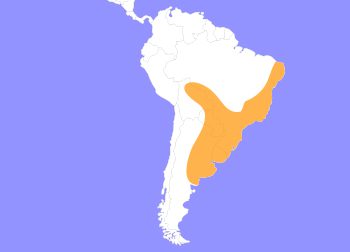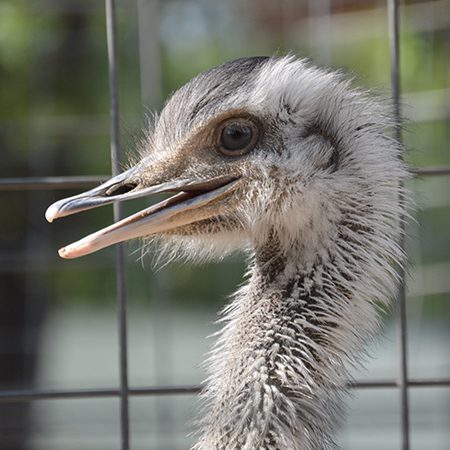Rhea
Rhea americana
The Greater Rhea is, by body weight, the 7th largest bird in the world, but the largest bird in the Americas. They are included in a group of birds called ratites, which are flightless birds that do not have a keeled sternum (their chest bone is flat). Most of these birds are very large, like the ostrich, emu, and cassowary, but this group also includes the kiwi. Penguins are not included because they do not have a flat breastbone, they just use it for swimming rather than flying.
Rheas are grayish brown in color with some black feathers along their back and wings. They also have a white underbelly. Proportionately, they have larger wings than emus have, almost similar to ostriches. They will use their wings like a sail when running, using them to turn different directions quickly.
They stand about 5 ft in height and can weigh up to 80 lbs. Lifespan can be as long as 13 years in captivity or even longer with excellent care. As adults, they are only known to make one sound. Males will make a long, low booming noise that can be heard over half a mile away. This is mainly used for mate attraction.

Rheas are native to South America, ranging across Brazil and Argentina.
HABITAT -They can be found in the grasslands of central South America.
DIET -Being omnivorous, they will eat grass and small birds, fish, and invertebrates.
FUN FACT -They give themselves dust baths by scraping dirt up with their bills and tossing it on their wings.
SOCIAL BEHAVIOR -Will form groups during the mating seasons.
ACTIVITY -They are diurnal being most active during the day and resting during the evening.
PREDATORS -Their eggs are eaten by armadillos and adults are hunted by cougars and humans.
SIZE -Average weight is 60-70 lbs and about 5 ft tall.
RELATIVES -They are in the same family as other large birds like emus and cassowaries.
CONSERVATION -They are considered Near Threatened by the IUCN because of their lands being converted to agricultural farms.
Cub Creek Animal Care Information
Housing - our rhea lives in the back pastures with our camel. This gives him lots of space to run and explore as well as places to graze. It is mostly open pasture with a roofed section for protection against weather. There is also a forest edge along the back of the pasture that can also be used for protection.
Diet - He is fed a mixture of game bird finisher and cracked corn to make sure he gets all the necessary nutrients and vitamins. He also has access to a Nelson water bowl, which constantly provides him with fresh water.
Enrichment - Living in a multi-species enclosure gives our reah lots of enrichment through daily interactions. We also will occasionally scatter feed, which prolongs eating time by making him seek out his food instead of just having it in one location.

